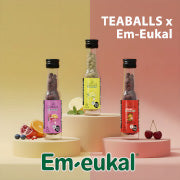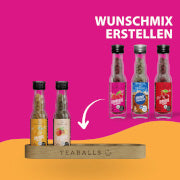
Microplastics in tea bags – an invisible danger in your cup?
Every day, millions of people enjoy a cup of tea—whether to relax or as a healthy alternative to coffee. But did you know that many conventional tea bags can release not only tea, but also billions of microplastic particles into your beverage? Studies have published alarming figures showing that some plastic tea bags release massive amounts of microplastics when brewed.
Scientific findings:
How much microplastic is in your tea?
A study from McGill University in Canada found that a single plastic tea bag can release up to 11.6 billion microplastic particles and 3.1 billion nanoplastic particles into hot water. These particles are so small they're invisible to the naked eye—yet they enter your body.
Additionally, a study by the Autonomous University of Barcelona found that microplastics can not only be ingested but also absorbed by human intestinal cells. The long-term health consequences are not yet fully understood, but initial evidence suggests that microplastics could cause inflammation in the body and affect hormonal processes.

Which tea bags are affected?
Not all tea bags contain plastic. Particularly problematic are:
Nylon tea bags : Often used in high-quality or “luxury” teas, they release microplastics during brewing.
Tea bags with polypropylene : Many conventional paper bags are sealed with a thin layer of polypropylene to increase their stability.

What can you do?
To avoid microplastics in your tea, there are simple alternatives:
Loose tea : The most sustainable solution – simply brew with a stainless steel tea strainer or a French press.
Biodegradable tea bags : Some manufacturers offer plastic-free versions made from plant fibers.
Reusable tea filters : Sustainable alternatives made of stainless steel or cotton reduce plastic waste and prevent microplastic pollution.
TEABALLS :
In our opinion the best and most sustainable solution.
Conclusion
Conscious enjoyment without microplastics
Microplastics in food are a growing problem, but there are sustainable and healthy alternatives, especially when it comes to tea. Be careful which tea bags you use, or switch directly to loose tea – for a plastic-free, healthy experience!

Sources
- Süddeutsche Zeitung – Plastic recycling and microplastics
- WWF Germany – Plastic waste in the sea
Greenpeace Austria – Plastic waste and recycling
German Consumer Centre – Dangers to the environment from plastic
European Parliament – Plastic waste and recycling in the EU












